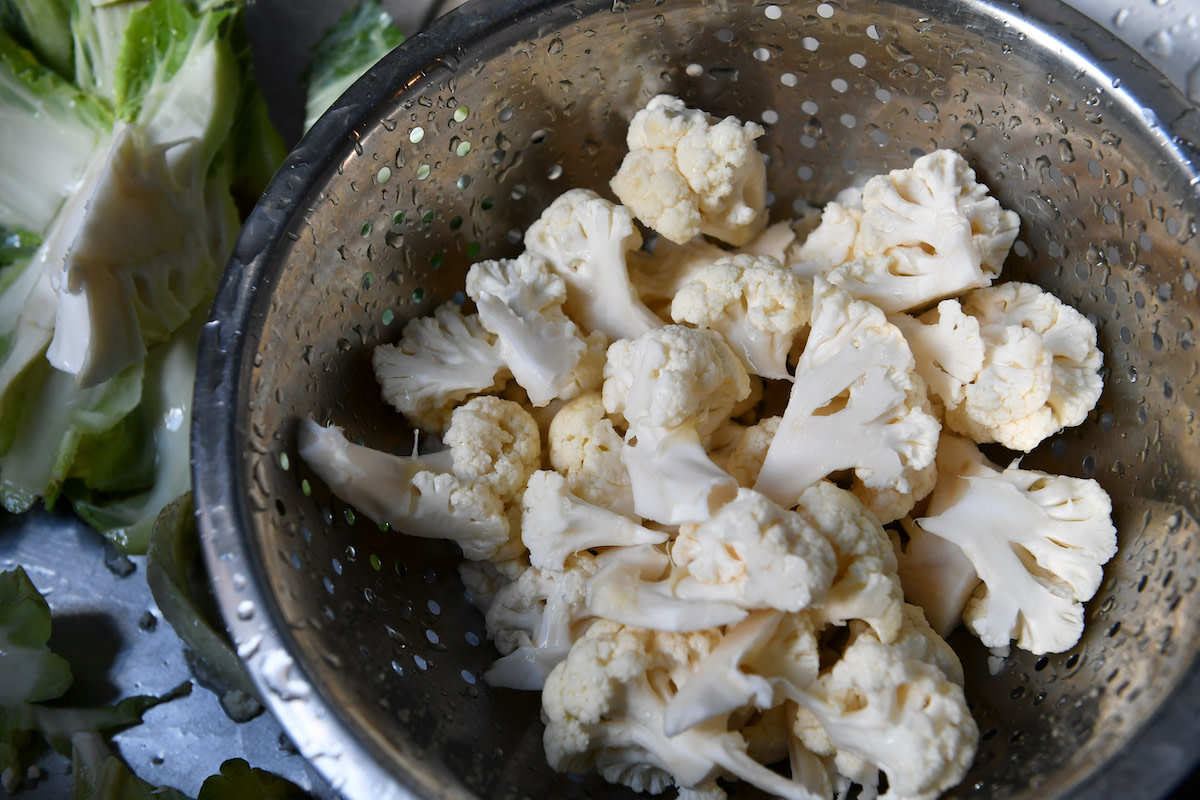Knowing how to clean cauliflower is an invaluable skill for home cooks. Learn how to properly prep a head of cauliflower for your next meal.
Learn From the Best
Why Should You Clean Cauliflower?
Cauliflower is one of the more versatile veggies: You can add it to stir-frys, make roast cauliflower as a side dish, or even turn it into cauliflower rice. Unfortunately, the tiny crags and cracks that are so great for holding flavor and spices also make cauliflower vulnerable to unwanted pests. A head of cauliflower is full of crevices that make it particularly susceptible to collecting insects, bacteria, and dirt.
How to Clean Cauliflower in 6 Steps
Luckily, washing cauliflower thoroughly doesn’t require much time or effort. Here’s how to wash cauliflower step-by-step:
- 1. Break the cauliflower into smaller pieces. Separating a whole head of cauliflower into individual cauliflower florets makes it much easier to clean. To do this, quarter the cauliflower using a sharp knife and a cutting board, then cut away the center stem and use the knife or your hands to break the remaining cauliflower into florets.
- 2. Rinse the cauliflower florets. Transfer the cauliflower pieces to a colander and place them under running water to eliminate bugs and larger pieces of dirt.
- 3. Prepare a blanching station. Briefly boiling the cauliflower in saltwater (aka blanching) can kill bacteria and parasites—and flavor the cauliflower. Fill a large pot with water and about a tablespoon of salt and bring it to a boil. While the water comes to a boil, prepare a separate bowl with ice water.
- 4. Add the florets to the boiling water. Boil the cauliflower florets for about two minutes to ensure you’ve killed any parasites.
- 5. Transfer the cauliflower to the ice water. Using a slotted spoon, remove the florets from the hot water and immediately plunge them into the prepared ice bath. The cold water will stop the cooking process and ensure your cauliflower stays crisp.
- 6. Dry and use or store your cauliflower. Dry the cauliflower with a clean kitchen towel or paper towel. You can cook the cauliflower immediately or put it in a loose plastic bag in the fridge to use later on. To flash-freeze blanched cauliflower, place the florets on a parchment paper–lined baking sheet and freeze until solid. Then, transfer the frozen florets to plastic bags or airtight containers and freeze them for later use.
Mise En Place
To perfect the mother sauces and make French cuisine at home, you must master essential cooking techniques. Discover Chef Thomas Keller’s approach to setting up a home kitchen and sourcing quality ingredients like fish and clams when you sign up for the MasterClass Annual Membership.
